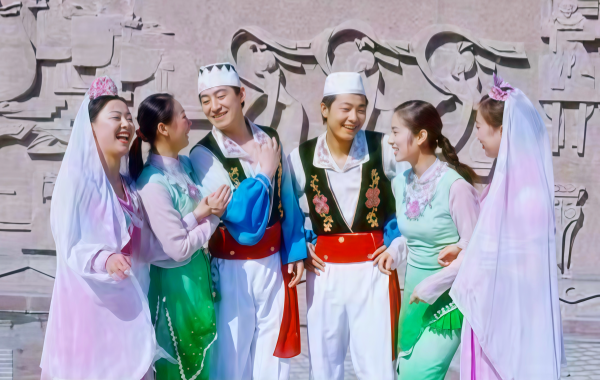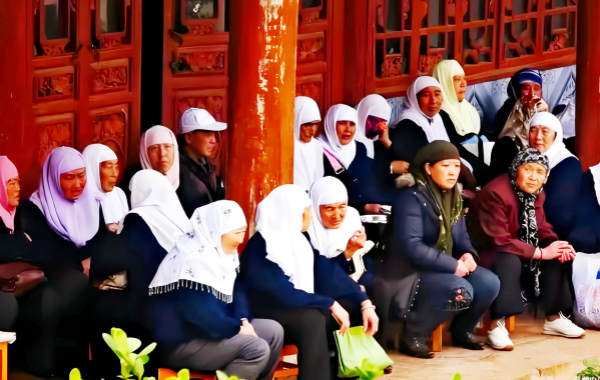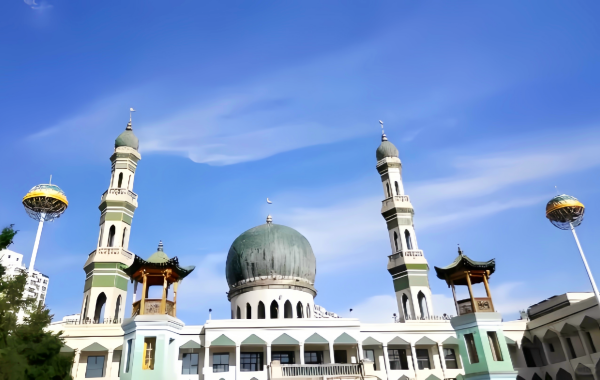Hui
Introduction

The Hui Nationality is one of the most widely distributed ethnic groups in China, known for its unique cultural traditions and strong Islamic faith. The Hui people have a rich history and have made significant contributions to Chinese society in various fields.
 History
History
▪ Origin
The Hui Nationality has its origins in the Arab and Persian merchants who traveled to China along the Silk Road during the Tang Dynasty (618-907 AD). Over time, these merchants settled in China, intermarried with local Han Chinese, and gradually formed a distinct ethnic group with its own cultural identity.
▪ Development
During the Yuan Dynasty (1271-1368 AD), the Hui people experienced significant growth and development as they were favored by the Mongol rulers for their trading and administrative skills. Many Hui people held important positions in the government and military, contributing to the stability and prosperity of the empire.
▪ Modern Times
In modern times, the Hui Nationality has continued to thrive and develop, maintaining its unique cultural traditions while also integrating into mainstream Chinese society. The establishment of the Ningxia Hui Autonomous Region in 1958 provided the Hui people with greater autonomy and opportunities for cultural and economic development.
 Population
Population
▪ Quantity
As of the latest census data, the Hui population in China is approximately 10.6 million, making it one of the larger ethnic minorities in the country.
▪ Distribution
The Hui people are mainly distributed in the Ningxia Hui Autonomous Region, which is their cultural and historical homeland. They also have significant populations in Gansu, Qinghai, Henan, Hebei, Shandong, and other provinces across China, reflecting their wide distribution and adaptability.
 Economy
Economy
The Hui economy is diverse, with agriculture, handicrafts, and trade being the main sectors. Many Hui people are skilled in traditional crafts such as carpet weaving, metalworking, and leather goods production. In recent years, the Hui economy has also seen significant growth in tourism, with the development of cultural tourism projects showcasing Hui history and traditions.
 Culture
Culture
▪ Language and Script
The Hui people primarily speak Chinese, with some influence from Arabic and Persian vocabulary related to Islamic culture. They also use the Arabic script for religious purposes, such as reading the Quran and writing Islamic texts.
 ▪ Religious Beliefs
▪ Religious Beliefs
Islam is the predominant religion of the Hui Nationality, with mosques playing a central role in their community life. The Hui people observe Islamic customs and traditions, such as fasting during Ramadan and performing the Hajj pilgrimage to Mecca.
▪ Clothing
Traditional Hui clothing is characterized by its simplicity and practicality, reflecting Islamic modest dress codes. Men typically wear white or black robes and caps, while women wear long dresses and headscarves. In modern times, Hui clothing has also incorporated elements of mainstream Chinese fashion.
▪ Hunting
Hunting is not a significant part of Hui culture, as Islam prohibits the killing of animals for sport or pleasure. However, some Hui people may engage in hunting for subsistence purposes in certain regions.
▪ Literature
Hui literature includes a rich collection of Islamic texts, folk tales, and poetry. Many Hui writers have made significant contributions to Chinese literature, blending Islamic themes with traditional Chinese storytelling techniques.
▪ Transportation
The Hui people have traditionally relied on various modes of transportation, including horses, camels, and donkeys, for travel and trade. In modern times, they have also embraced modern transportation methods such as cars, trains, and airplanes.
 Science
Science
▪ Medicine
Traditional Hui medicine combines elements of Islamic medicine with Chinese herbal medicine, offering a unique approach to healthcare. Hui doctors use a combination of herbs, acupuncture, and massage to treat various ailments, reflecting their holistic view of health and wellness.
▪ Calendar
The Hui people use the Islamic lunar calendar for religious purposes, such as determining the dates of Islamic festivals and observances. They also use the Gregorian calendar for daily life and business transactions, reflecting their integration into mainstream Chinese society.
 Art
Art
▪ Music
Hui music is characterized by its melodic beauty and rhythmic complexity, reflecting Islamic musical traditions. Traditional Hui instruments include the oud (a type of lute), the daf (a large frame drum), and the ney (a reed flute). Hui music is often performed at religious ceremonies, weddings, and other festive occasions.
▪ Dance
Hui dance is diverse and vibrant, with various styles reflecting different regions and cultural influences. Traditional Hui dances often incorporate elements of Islamic prayer and meditation, as well as folk traditions from Central Asia and China.
▪ Architecture
Hui architecture is characterized by its Islamic style, with mosques being the most prominent examples. Hui mosques feature distinctive domes, minarets, and arches, reflecting Islamic architectural principles. In addition to mosques, Hui people also build traditional houses and public buildings that incorporate Islamic design elements.
 ▪ Landscape
▪ Landscape
The Hui landscape is diverse, ranging from arid deserts to lush green valleys. Many Hui villages and towns are located near rivers or oases, providing a source of water for agriculture and daily life. The natural beauty of the Hui landscape has inspired many artists and poets throughout history.
▪ Arts and Crafts
Hui arts and crafts are renowned for their intricate designs and high-quality craftsmanship. Traditional Hui crafts include carpet weaving, metalworking, leather goods production, and calligraphy. Many Hui artisans have passed down their skills from generation to generation, preserving these ancient traditions for future generations.
 Custom
Custom
▪ Etiquette
Hui etiquette is based on Islamic principles of respect, hospitality, and modesty. Hui people greet each other with a handshake or a nod, and they often exchange gifts during festive occasions. They also place great importance on cleanliness and hygiene, reflecting Islamic teachings on personal conduct.
▪ Marriage Customs
Hui marriage customs are characterized by their simplicity and religious significance. Marriages are typically arranged by the families of the bride and groom, with Islamic principles guiding the selection process. The wedding ceremony is a religious event, with prayers and recitations from the Quran playing a central role.
▪ Festivals
The Hui people celebrate several Islamic festivals throughout the year, including Eid al-Fitr (the Festival of Breaking the Fast) and Eid al-Adha (the Festival of Sacrifice). These festivals are marked by prayers, feasting, and family gatherings, reflecting the importance of community and family in Hui culture.
 ▪ Diet
▪ Diet
Hui cuisine is influenced by Islamic dietary laws, which prohibit the consumption of pork and alcohol. Hui dishes often feature lamb, beef, and chicken, as well as a variety of vegetables and grains. Traditional Hui dishes include hand-pulled noodles, lamb skewers, and various types of bread and pastries.
▪ Funeral Customs
Hui funeral customs are based on Islamic principles of simplicity and respect for the deceased. The body is typically washed and wrapped in a white shroud before being buried in a simple grave. Funeral prayers are recited, and family and friends gather to pay their respects and offer condolences.
What Our Clients Say?
Based on 10,000+ traveler reviews











